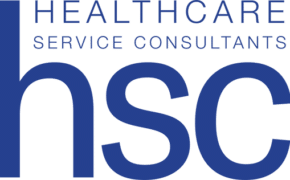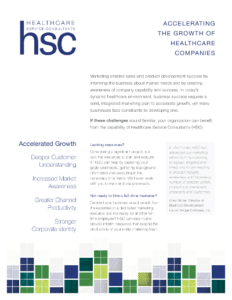
Your website is the center of your marketing universe. It communicates the problems your company solves. A company website also relays the benefits of using your products to solve them.
It’s important that messaging considers the unique perspectives and language of key clinical, technical, and operational stakeholders. How can you know messaging is on point?
Google Analytics (GA) assesses statistics related to your website traffic, including:
- information about your audience demographics
- what content is most popular
- which product marketing channels are driving the most traffic to your website
Together, this information provides valuable insights into your website marketing efforts. It also informs the level of market awareness you are achieving.
In this month’s blog, we explore the primary goals of Google Analytics. We also provide tips for incorporating GA into your healthcare IT product marketing strategy.
Measuring Awareness
There should be a direct correlation between:
- the number of visitors your site attracts, and
- the general awareness of your company and product in the broader marketplace.
Google Analytics profiles your site traffic and breaks it down into key metrics that measure:
- who is visiting your site (e.g. are they new or returning visitors)
- where they’re coming from (e.g. geography, referral sources)
- which pages they visited
Tracking these metrics over time reveals important product awareness trends:
- How many people are visiting my website?
- Is this number increasing?
- Am I attracting new visitors?
- If so, are they from my target market area?
- What mechanisms are attracting them and what pages (products) are most popular?
Understanding Traffic Sources
A well-rounded content marketing strategy includes many different pathways for healthcare IT decision makers to learn about your offering. Understanding which channels are driving the most traffic to your website is key to optimizing marketing efforts.
Google Analytics provides sophisticated tools that allow you to categorize your website traffic according to its referral source, such as:
- direct website hits (e.g. people typing in your URL)
- organic search results (e.g. Google)
- paid keywords or advertising referrals
- social media or email engagement
- click-throughs from press releases, trade publications, etc.
- gated content like white papers, case studies, and other assets
With these insights, you will better be able to determine whether your visitors are already aware of you. For example, if they’re coming to your site directly. Or, if they’re finding out about you through other channels. This information also helps measure the effectiveness of your website SEO and any associated investments in paid advertising (e.g. Google keywords or ads).
Another key thing to keep in mind when analyzing your website traffic at this level is that it is equally important to understand what not to measure. This is a common pitfall for many healthcare IT companies. Certain audiences—internal employees, B2B partners, customer portal traffic, referral spam—drive increased (and often repeated) visits to your website. Excluding them from your traffic analytics increases accuracy. It also provides a better picture of your core audience over time.
Bounce Rates and Time on Site
Once visitors hit your website, GA provides intel on how much time they spend engaging with your content. In healthcare IT, stakeholders use websites to educate themselves on problems they are facing—and potential solutions that might exist. But, they are often time constrained. It’s unlikely they’ll spend time reading something they don’t find immediately relevant or valuable.
There are two ways GA can help measure the appeal and effectiveness of your website content:
- Bounce rates. A “bounce” is when a visitor navigates to your website and then immediately leaves. High bounce rates reflect a website that is not meeting the expectations of your target audience.
- Time on page. This is the average amount of time that all visitors have spent on specific pages of your website. The greater the time spent, on average, the more your visitors are engaging with your content (and vice versa).
An Integrated Healthcare IT Marketing Program
Are you struggling to measure the effectiveness of your product marketing efforts? Our team of experts can help you set up and optimize Google Analytics for your organization. In doing so, you’ll better assess the quality and performance of your website, its content, and your communication strategies. Contact us to learn more.




